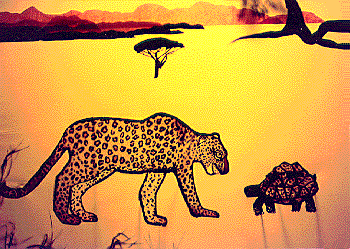

Definition of puppetry full#
Initially consisting of one puppeteer, by 1730 three puppeteers were used to operate each puppet in full view of the audience. Chikamatsu Monzaemon, considered by many to be Japan's greatest playwright, gave up writing Kabuki plays and focused exclusively on the puppet-only Bunraku plays. Bunraku developed out of Shinto temple rites and gradually became a highly sophisticated form of puppetry. Japan has many forms of puppetry, including the bunraku. Some very experienced puppeteers can manipulate their puppets to perform various stunts, for example, somersaults in the air. In Taiwan, budaixi puppet shows, somewhat similar to the Japanese Bunraku, occur with puppeteers working in the background or underground. By the Song Dynasty (960-1279 AD), puppets played to all social classes including the courts, yet puppeteers, as in Europe, were considered to be from a lower social stratum. China has a history of puppetry dating back 2000 years, originally in "pi-ying xi", the "theatre of the lantern shadows", or, as it is more commonly known today, Chinese shadow theatre. Some scholars trace the origin of puppets to India 4000 years ago, where the main character in Sanskrit plays was known as "Sutradhara", "the holder of strings". The Javanese Wayang theater was influenced by Indian traditions. Works like the Natya Shastra and the Kamasutra elaborate on puppetry in some detail. The epic Mahabharata, Tamil literature from the Sangam Era, and various literary works dating from the late centuries BC to the early centuries of the Common Era, including Ashokan edicts, describe puppets. Another figure is a terracotta monkey which could be manipulated up and down a stick, achieving minimum animation in both cases. Archaeologists have unearthed one terracotta doll with a detachable head capable of manipulation by a string dating to 2500 BC. There is slight evidence for puppetry in the Indus Valley Civilization. Performed only by women in the streets of central Karnataka around Davangere Throughout rural Africa, puppetry still performs the function of transmitting cultural values and ideas that in large African cities is increasingly undertaken by formal education, books, cinema, and television Asia East and South AsiaĪ street puppet show consisting the drama between two wives of Shiva.


Today, puppetry continues as a popular form, often within a ceremonial context, and as part of a wide-range of folk forms including dance, storytelling, and masked performance. Certainly, secret societies in many African ethnic groups still use puppets (and masks) in ritual dramas as well as in their healing and hunting ceremonies. Sub-Saharan Africa may have inherited some of the puppet traditions of Ancient Egypt. The oldest written record of puppetry can be found in the written records of Xenophon dating from around 422 BC. Hieroglyphs also describe "walking statues" being used in Ancient Egyptian religious dramas. Wire controlled, articulated puppets made of clay and ivory have also been found in Egyptian tombs. There is evidence that they were used in Egypt as early as 2000 BC when string-operated figures of wood were manipulated to perform the action of kneading bread. Some historians claim that they pre-date actors in theatre. Puppets have been used since the earliest times to animate and communicate the ideas and needs of human societies. Puppetry is a very ancient art form, thought to have originated about 3000 years ago.


 0 kommentar(er)
0 kommentar(er)
